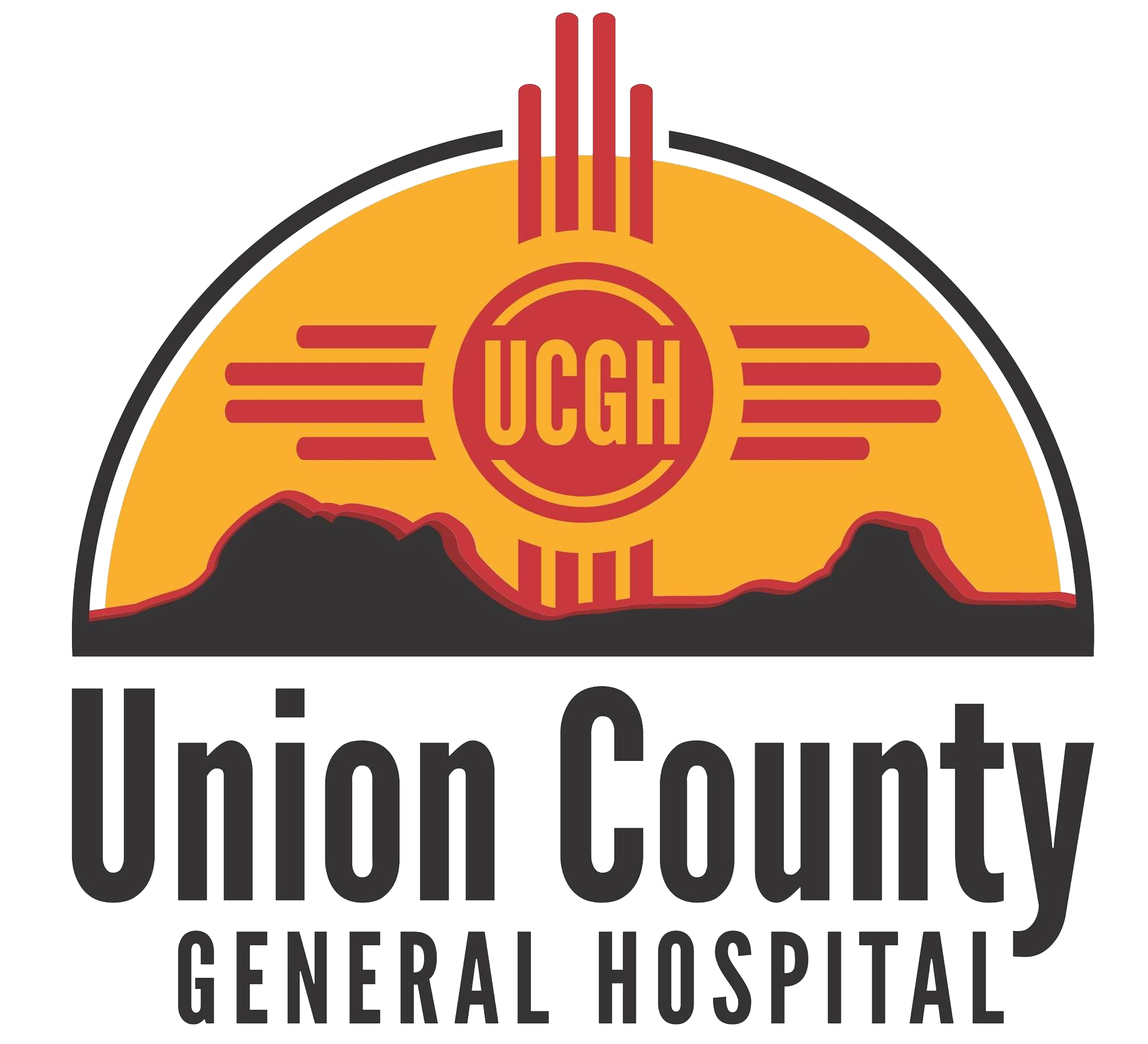Union County General Hospital Radiology
Sometimes diagnosing and treating diseases and injuries require using medical imaging techniques. These techniques play an important role in monitoring a patient’s treatment and predicting the outcome. The radiology department of UCGH is equipped with some of the most up-to-date and state-of-the-art technology available in the industry.
We are pleased to announce the acquisition of our newest equipment, the Aquilion RXL, a low dose radiation machine (CT or CAT Scanner) which is safer for patients and offers higher quality imaging.
The UCGH Aquilion RXL is the first of its kind in the state of New Mexico; this machine incorporates the latest technologies to view internal organs and structures of the body.

UCGH Radiology provides:
X-Ray
X-Rays are a normal part of modern medicine. Used primarily to identify fractures in bones, x-ray machines are also used for Radiation Therapy in the fight against cancer.
The UCGH Radiology department applies a dignified approach when helping patients who must undergo X-Rays as part of their diagnosis and/or treatment.
CT (CAT) Scan
A computed tomography scan, better known as a CT or CAT Scan, allows physicians to see inside the body. Through combined use of X-Rays and computer technology, any part of the body can be scanned and viewed in real time. The detail is sharper than with standard X-Rays and the procedure is both non-invasive and painless.
MRI
MRI stands for Magnetic Resonance Imaging. Like a CAT Scan or X-Ray, the MRI provides images of the interior of the body. As such, it too reduces the need for exploratory surgery so is non-invasive.
However, the MRI uses powerful magnets and radio waves in combination with the computer system rather than radiation. MRI's are commonly used for inspecting blood vessels, the heart, and spinal cord injuries but may be used in many other applications.
Note: The MRI is performed through a mobile unit contracted through UCGH to better serve patient needs.
Nuclear Medicine
Nuclear Medicine involves the use of radiotracers which are injected into the blood stream of a patient. It may be used in many applications for both diagnostic and therapeutic purposes. A special camera in conjunction with the tracers and a computer create unique imaging which cannot be had using other means.
Some of the common uses of Nuclear Medicine include:
- visualize blood flow, detect coronary artery disease, evaluate heart function
- evaluate effectiveness of treatments to the heart, valves, and arteries
- evaluate bones, prosthetic joints, possible biopsy sites
- detection of problems, abnormalities, and diseases of the brain
- evaluation of other organs of interest
Essentially, wherever there is blood flow in the body, Nuclear Medicine can help physicians evaluate and identify problems. Also, aside from the injection, the procedure is non-invasive and painless.
Ultrasound
Most people today are familiar with the Ultrasound because nearly every couple expecting a child gets to enjoy the delight and excitement which only comes with this technology. Seeing the tiny hands, learning the gender of the baby, and getting nice photos and video to show the family are all part of the experience...and the publicity of the technology.
Put simply, the Ultrasound is a device for seeing inside a patient using sound waves. In the case of pregnancies, it allows skilled technicians to determine the age of a fetus, to identify potential problems before they arise, and even diagnose conditions.
In fact, Ultrasounds are performed on many outside pregnancies; physicians can use the device to view any soft tissue, including:
- heart
- blood vessels
- liver
- gallbladder
- spleen
- pancreas
- kidneys
- bladder
- uterus
- ovaries
- eyes
- thyroid
- testes
The only limits on ultrasound technology is with hard tissue (i.e. bone) and pockets of air or gas.
Bone Density Scans
Bone density scans or tests are simple, quick, non-invasive, and pain-free. They are most often used in older patients, especially women, to determine the density of the bones.
As people age, their bones tend to become more porous. This is the concept from which the condition osteoporosis derives its name. The term literally means, 'bone porous condition.'
Mammography
Mammography is the use of a specialized, low-dose imaging machine which allows clinicians to detect signs of cancer in the breasts. It is especially useful because when performed regularly, it can detect cancerous lumps early and save lives.
A mammogram is a non-invasive means of protecting lives which can detect changes in breast tissue up to two years before they can be felt by a physician.
Both the American College of Radiology (ACR) and the U.S. Department of Health and Human Services (HHS) recommend that women over 40 have a mammogram performed once every two years.
Anyone who is at high risk, meaning a history of breast cancer either themselves or in their immediate family, should have an annual breast MRI as well (see, MRI below).
Please note that Mammography is performed by an outside provider by invitation of UCGH.
UCGH Radiology Department Hours of Operation
The Radiology department hours are:
Monday-Friday, from 7 a.m. to 9 p.m. with 24-hour on-call service.
Find Us
Located in Clayton, New Mexico, Union County General Hospital (UCGH) also proudly serves the communities of Texline and Dalhart, Texas, Boise City, Oklahoma, Des Moines, Raton, and Amistad, NM, and many smaller communities in the region.
